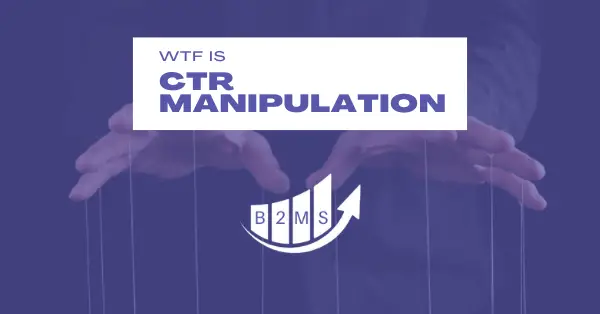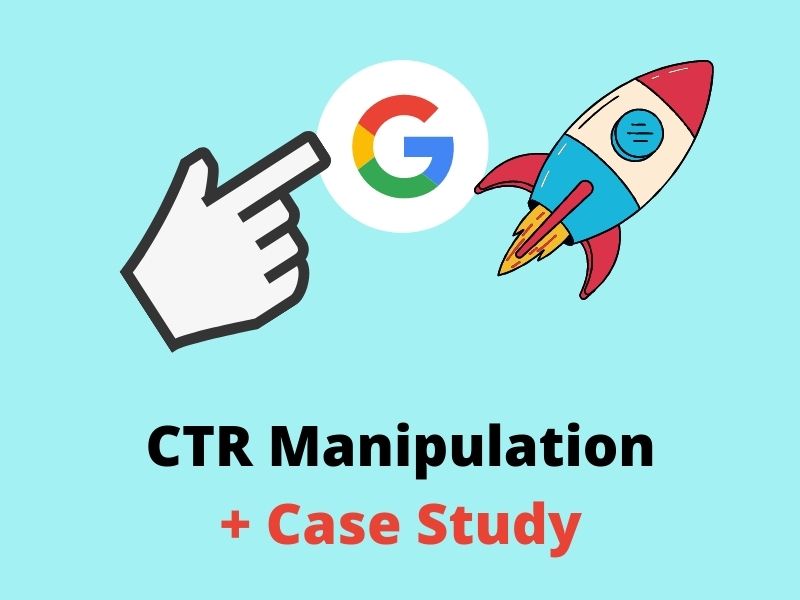Increase Your Traffic With Smart CTR Manipulation Strategies
In a progressively competitive electronic landscape, properly improving your traffic pivots on understanding click-through rate (CTR) control strategies. By recognizing the subtleties of your target market's choices, you can craft compelling headlines and tactically use visual aspects to record focus. Moreover, A/B testing permits for precise modifications based on actual customer actions, which can significantly improve your engagement metrics. Nonetheless, the trick to sustained success hinges on a systematic analysis of your efforts. What specific approaches, when executed, can bring about transformative results?
Recognizing Click-Through Rate

Comprehending the variables affecting CTR is vital for maximizing advertising efforts. Aspects such as ad style, audience, and placement targeting play considerable functions in determining CTR. Ads positioned in prime places on a webpage or those that are visually appealing have a tendency to attract more clicks. Additionally, the relevance of the ad to its target market can considerably impact involvement, highlighting the importance of complete marketing research.
Additionally, tracking CTR over time enables marketing professionals to analyze the performance of numerous projects and make data-driven modifications. By assessing fads and patterns, services can refine their methods, inevitably bring about increased user engagement and improved conversion rates. A thorough understanding of CTR is vital for any effective online advertising effort.
Crafting Engaging Headings
While efficient advertising and marketing approaches pivot on various variables, crafting compelling headlines stands out as a critical component that can substantially influence click-through rates. A heading acts as the impression of your web content, and its capacity to engage prospective readers directly impacts their decision to click.
To produce a reliable headline, think about the adhering to strategies. Initially, make use of expressive and effective language that mixes inquisitiveness or feeling. Words like "supreme," "necessary," or "revealed" can evoke rate of interest and timely activity. Second, keep your headlines concise yet detailed; a great policy of thumb is to intend for about 60 personalities to ensure full visibility on search engines.
Furthermore, incorporating numbers or checklists can boost quality and make your material appear even more digestible. "5 Tips for Boosting Your Traffic" is attractive and straightforward. Take into consideration the target audience's demands and rate of interests, customizing headings to resonate with their certain desires or discomfort points.
Using Aesthetic Aspects
Consistently integrating visual aspects right into your advertising approach can significantly improve involvement and boost click-through rates. Visuals such as images, infographics, and videos capture interest more properly than text alone. They act as compelling tools that damage up thick material, making it much more digestible and inviting for individuals.
High-grade photos relevant to your material can stimulate feelings and create a stronger link with your audience. In addition, infographics can provide intricate data in a conveniently reasonable style, permitting customers to grasp essential details swiftly. Video clips, on the various other hand, are especially effective in check my reference conveying messages and can cause greater retention prices amongst viewers.
Additionally, the calculated usage of design and colors elements can affect customer behavior. Appealing colors can direct a user's eye towards specific phone call to action, while regular branding cultivates recognition and count on. Make sure that your visual content is maximized for different gadgets, as mobile individuals comprise a substantial part of web website traffic.
Carrying Out A/B Testing
After developing an aesthetically engaging advertising and marketing strategy, the next step entails adjust these elements via A/B testing. LinkDaddy CTR Manipulation. This technique, also recognized as split testing, allows marketing professionals to contrast 2 versions of an electronic asset-- be it an e-mail, landing web page, or ad-- to figure out which performs much better in regards to click-through rate (CTR)
To apply A/B screening properly, begin by identifying a particular element to test, such as headlines, pictures, or call-to-action switches. It is crucial to separate one variable each time to properly evaluate its effect on user behavior. Next, develop two variants: the control (A) and the version (B) Make sure that both versions are shown to a comparable audience under similar problems to get rid of prejudice.
After gathering data over a fixed timeframe, evaluate the results to identify which version generated a greater CTR. The understandings acquired from A/B testing can inform future advertising strategies and drive constant improvement in user see this site involvement, inevitably improving total web traffic.
Evaluating and Readjusting Approaches

Once the information is gathered, it is essential to recognize patterns and trends that emerge from the outcomes. For example, if a particular call-to-action consistently exceeds others, it could require a lot more noticeable placement or bigger application across campaigns. Furthermore, demographic understandings can guide future targeting methods, ensuring that messages are tailored to the preferences of particular target market sections.
Changes must be repetitive, entailing continuous testing and re-evaluation. Executing modifications based Recommended Reading on A/B screening is not a single effort; it needs continuous surveillance and adaptation to maintain optimal performance. By fostering a society of data-driven decision-making, marketers can properly enhance their click-through rates, inevitably driving greater traffic and conversions. In this vibrant electronic landscape, dexterity and responsiveness are paramount for sustained success.

Verdict
By comprehending the details of click-through rates, crafting engaging headings, utilizing engaging visual components, and applying A/B testing, a data-driven method can be developed. Continual analysis and change of techniques based on customer behavior are important for maximizing results.
Click-through rate (CTR) serves as a crucial metric that evaluates the efficiency of on-line marketing projects, embodying the partnership in between ad exposure and customer interaction. It stands for the percent of customers that click on a specific link or advertisement compared to the overall number of individuals who see it. By assessing trends and patterns, businesses can refine their methods, inevitably leading to raised customer involvement and boosted conversion prices. The insights got from A/B testing can notify future advertising methods and drive continual renovation in customer involvement, eventually enhancing overall web traffic.
Trick metrics such as conversion prices, interaction levels, and user responses must be thoroughly examined to notify decisions.